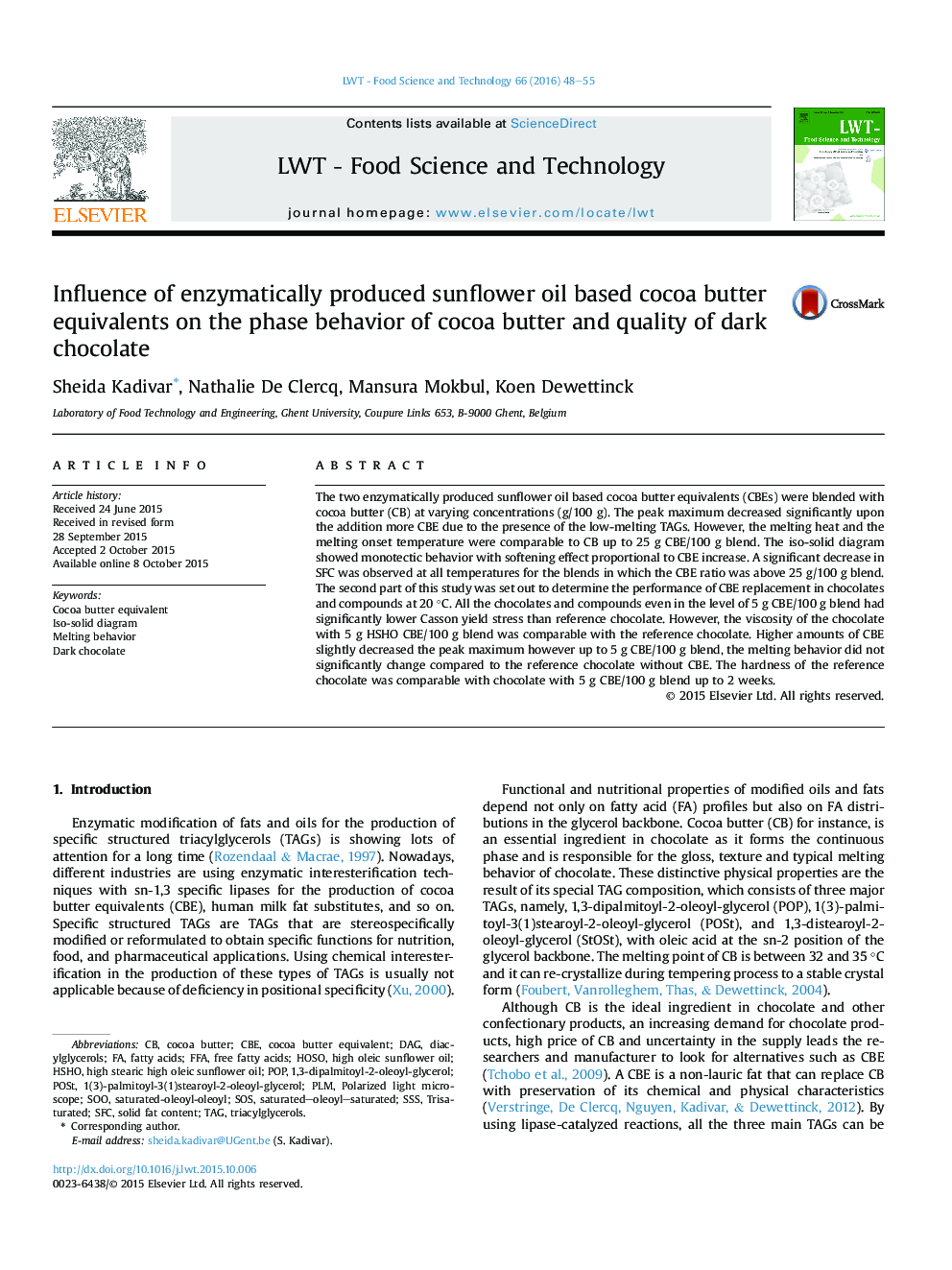| Article ID | Journal | Published Year | Pages | File Type |
|---|---|---|---|---|
| 6400878 | LWT - Food Science and Technology | 2016 | 8 Pages |
â¢Several potential CBEs were formulated.â¢Iso-solid phase diagram of mixtures of CBEs with CB showed compatibility with no eutectic behavior.â¢The SFC profiles of the blends were reduced by increasing the CBE level.â¢Up to 5 g CBEs/100 g blend, the physical characteristics of the chocolates were not significantly influenced.â¢HSHO CBE was a more promising source than HOSO CBE as an alternative to CB.
The two enzymatically produced sunflower oil based cocoa butter equivalents (CBEs) were blended with cocoa butter (CB) at varying concentrations (g/100 g). The peak maximum decreased significantly upon the addition more CBE due to the presence of the low-melting TAGs. However, the melting heat and the melting onset temperature were comparable to CB up to 25 g CBE/100 g blend. The iso-solid diagram showed monotectic behavior with softening effect proportional to CBE increase. A significant decrease in SFC was observed at all temperatures for the blends in which the CBE ratio was above 25 g/100 g blend. The second part of this study was set out to determine the performance of CBE replacement in chocolates and compounds at 20 °C. All the chocolates and compounds even in the level of 5 g CBE/100 g blend had significantly lower Casson yield stress than reference chocolate. However, the viscosity of the chocolate with 5 g HSHO CBE/100 g blend was comparable with the reference chocolate. Higher amounts of CBE slightly decreased the peak maximum however up to 5 g CBE/100 g blend, the melting behavior did not significantly change compared to the reference chocolate without CBE. The hardness of the reference chocolate was comparable with chocolate with 5 g CBE/100 g blend up to 2 weeks.
